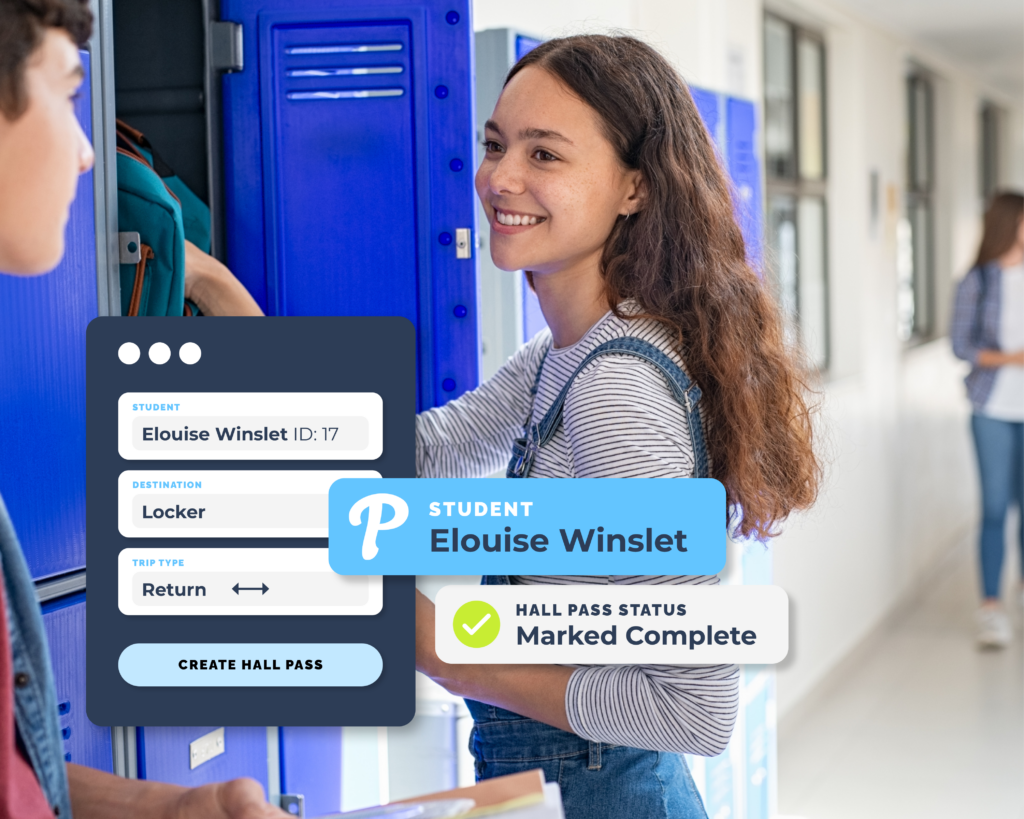In today’s rapidly evolving educational landscape, the seamless integration of technology has become imperative for creating safe, efficient, and well-coordinated learning environments. One crucial synergy lies in the integration of Student Information Systems (SIS) with dedicated safety software.
This blog post explores how integrating Student Information Systems (SIS) and safety software in a school can offer several benefits, enhancing overall efficiency, communication, and security.
We’ll dive into:
- What is an SIS?
- How Do SIS and Safety Software Integrate?
- Benefits of Integrating Your SIS and Safety Software
- Pitfalls to Avoid
- How Pikmykid Safety Software Integrates with SIS

What is an SIS?
In education, SIS stands for Student Information System. It is a comprehensive software platform or application that schools and districts use to manage various aspects of student data and information. SIS is designed to streamline administrative processes, enhance communication, and centralize information related to students. The system typically includes features and functionalities that cover a wide range of student-related activities and data, including:
- Enrollment and Admissions: Managing the enrollment process, including student registration, admission, and class assignments.
- Student Records: Maintaining detailed and up-to-date student information, such as personal details, contact information, attendance records, and academic performance.
- Grading and Transcripts: Recording and calculating grades, generating report cards, and maintaining transcripts.
- Attendance Tracking: Monitoring and recording student attendance, including absences and tardiness.
- Scheduling: Creating and managing class schedules, including course assignments and teacher allocations.
- Communication: Facilitating communication between educators, administrators, and parents through features like messaging, announcements, and online portals.
- Health and Medical Records: Storing and managing information related to students’ health, medical history, and immunization records.
- Discipline Management: Recording and tracking disciplinary incidents, as well as managing consequences and interventions.
- Reporting and Analytics: Generating various reports and analytics related to student performance, attendance, and other relevant data.
- Teacher and Staff Management: Maintaining records of teachers and staff, including contact information, professional development, and qualifications.
- Parental Access: Providing parents with access to their child’s academic progress, attendance, and other relevant information through a secure online portal.
- Integration with Other Systems: SIS often integrates with other educational software and systems, such as Learning Management Systems (LMS), finance systems, and safety software, to create a more cohesive and efficient educational ecosystem.
As schools and districts increasingly adopt various applications, the secure integration with a Student Information System (SIS) becomes a pivotal measure. This is essential for both school districts and vendors, as numerous applications, including those for content management, e-learning, student safety, transportation, lunch services, and enrichment programs, rely on SIS data for smooth and cohesive operations.

How Do SIS and Safety Software Integrate?
The integration of a Student Information System (SIS) with safety software is a systematic process designed to enhance overall safety measures in schools and districts.
Over the years, the integration of SIS and other applications has been streamlined through standardized data transfer formats, such as OneRoster®. OneRoster® simplifies the sharing of information about staff and students by consolidating it into a single standard. In districts where various services like Learning Management Systems (LMSs), tools, and applications are utilized, the importance of OneRoster® compliance becomes evident. Non-compliant services may necessitate unique roster data formats.
It is crucial to select compatible systems to ensure that the chosen safety software aligns seamlessly with the technology and data formats of the existing SIS.
Once the OneRoster format of information and other data requirements are established between SIS and the external applications, the next step is to identify the secure and common integration pathways compatible with districts.
Integration protocols, such as Application Programming Interfaces (APIs), are established to facilitate seamless communication, with a strong emphasis on implementing robust security measures to protect sensitive student information. Integration protocols like SFTP, APIs and third party applications like Clever and Classlink help establish a seamless communication between SIS and the vendor applications.
The emergency notification system within the safety software is integrated with the SIS, enabling swift dissemination of critical information to all stakeholders without burdening the staff and students who are not active in the system on the specific day during safety incidents.
Staff and personnel are provided with comprehensive training on how to effectively use the integrated system, with an emphasis on testing various scenarios, including emergency situations, to validate its effectiveness.
Continuous monitoring, maintenance, and compliance checks ensure the ongoing performance and adherence to regulations.
Additionally, gathering feedback and making iterative improvements contribute to optimizing the integrated SIS and safety software over time, ultimately fostering a secure and efficient learning environment.

Benefits of Integrating Your SIS and Safety Software
Integrating your SIS and safety software not only streamlines administrative processes but also fortifies the overall security measures within educational institutions. Before delving into the myriad benefits that arise from this integration, it is essential to recognize the pivotal role it plays in fostering a comprehensive ecosystem that prioritizes student safety, communication, and data management.
The integration of SIS and safety software empowers schools to proactively address emergencies, enhance communication channels, and provide stakeholders with accurate and real-time information, thereby ensuring a conducive environment for effective teaching and learning.
Streamlined Information Management:
- Data Accuracy: Integration ensures that student information is consistent across systems, reducing errors and discrepancies.
- Efficient Updates: Changes in student details (contact information, medical records, etc.) are automatically reflected in both the SIS and safety software, saving time and effort.
Improved Communication:
- Emergency Notifications: Safety software can utilize SIS data to quickly identify and notify parents, staff, and relevant authorities during emergencies.
- Parental Involvement: Integration allows seamless communication between educators and parents regarding student progress, events, and safety measures.
Enhanced Security:
- Access Control: Integration can help in managing access permissions, ensuring that only authorized personnel have access to sensitive student and safety information.
- Emergency Response: Safety software can use real-time SIS data to optimize emergency response plans, ensuring accurate student and staff location information during crises.
Efficient Attendance Documentation:
- Real-time Monitoring: Integrating attendance data from SIS into safety software enables real-time monitoring of student whereabouts, enhancing overall campus security.
- Automated Reporting: Attendance data can be automatically generated and shared with relevant stakeholders, improving overall accountability.
Centralized Reporting and Analytics:
- Data Insights: Integration allows for the analysis of comprehensive data, providing valuable insights into student behavior, safety incidents, and academic performance.
- Decision-Making Support: School administrators can make informed decisions by accessing consolidated reports that incorporate both academic and safety-related data.
Time and Cost Savings:
- Automation: Integration reduces manual data entry and administrative tasks, saving time and resources that can be redirected towards improving education quality.
- Resource Optimization: Streamlining processes leads to more efficient resource allocation, benefiting both academic and safety initiatives.
Compliance and Documentation:
- Regulatory Compliance: Integration helps ensure that both SIS and safety software adhere to relevant regulations and standards.
- Documentation: Improved record-keeping assists schools in maintaining compliance with safety protocols and other legal requirements.
Holistic Student Well-being:
- Early Intervention: Integrated systems can help identify patterns or concerns related to student well-being, enabling early intervention and support.
- Comprehensive Care: A holistic approach to student safety and information management fosters a supportive environment for both academic and personal development.
The integration of Student Information Systems (SIS) with safety software stands as a transformative approach in the realm of education, presenting multifaceted advantages for both administrators and stakeholders.

Pitfalls to Avoid
While integrating Student Information Systems (SIS) with safety software can offer numerous benefits, it’s essential to be aware of potential pitfalls to ensure a successful implementation. Here are some pitfalls to avoid:
-
Insufficient Planning:
Lack of Clear Objectives: Failing to define clear goals and objectives for the integration can lead to a disjointed and ineffective implementation. -
Poor Data Quality:
Inaccurate or Incomplete Data: Integrating with inaccurate or incomplete student information can result in errors and miscommunication. Regularly audit and clean the data before integration. -
Inadequate Security Measures:
Data Security Concerns: Insufficient security measures may expose sensitive student information to unauthorized access. Implement robust encryption, access controls, and authentication protocols. -
Limited Stakeholder Involvement:
Neglecting User Feedback: Failure to involve end-users, such as teachers, administrators, and parents, in the integration process may lead to resistance and dissatisfaction. Consider their needs and gather feedback throughout the integration. -
Incompatible Systems:
Mismatched Technologies: Ensure that the SIS and safety software are compatible and capable of seamless integration. Incompatibility issues can lead to data transfer errors and functionality issues. -
Ignoring Compliance Requirements:
Regulatory Non-Compliance: Neglecting to adhere to data protection regulations and educational standards can result in legal consequences. Stay informed about applicable laws and ensure compliance. -
Overlooking Training and Support:
Insufficient Training: Failing to provide adequate training for people can lead to confusion and reduced system adoption. Invest in comprehensive training programs and ongoing support. -
Inadequate Scalability:
Lack of Future-Proofing: Ensure that the integrated system can scale with the school’s growth and accommodate future updates and enhancements. Failure to plan for scalability may result in the need for frequent system replacements. -
Poor Change Management:
Resistance to Change: Employees and stakeholders may resist the integration if the benefits and purpose are not effectively communicated. Implement a robust change management strategy to address concerns and encourage buy-in. -
Overlooking Data Governance:
Lack of Data Governance Policies: Establish clear data governance policies to maintain data integrity, privacy, and consistency. Lack of governance can lead to data misuse and unauthorized access. -
Ineffective Communication:
Poor Communication Channels: Ensure transparent communication throughout the integration process. Keep stakeholders informed about progress, changes, and potential disruptions. -
Integration Complexity:
Overly Complex Solutions: Strive for simplicity in the integration process. Overly complex systems may be challenging to manage and maintain. -
Inadequate Testing:
Insufficient Testing Period: Thoroughly test the integrated system in a controlled environment before full deployment. Inadequate testing may lead to unexpected issues and disruptions.
By carefully addressing these pitfalls, schools can enhance the likelihood of a successful integration of SIS with safety software, promoting a more secure and efficient educational environment.

How Pikmykid Integrates with SIS and the Benefits for Schools
Pikmykid’s school safety and dismissal platform integrates with many Student Information Systems (SIS) to optimize various school management processes and create safer daily and emergency operations.
1. Dismissal Management:
In the realm of dismissal management, SIS integration relieves schools of the need to manage student enrollment manually, ensuring attendance is updated in real time and aligns the authorized individuals to manage pickup schedules. This integration streamlines dismissal procedures, reduces wait times, and enhances overall efficiency. Real-time synchronization with SIS ensures accurate accounting of student attendance and dismissal activities as well.
2. Hallway Management with Digital Hall Passes:
In hallway management with digital hall passes, real-time student information syncs with the SIS and helps staff to provide kiosks for students to request hall passes based on specific locations where they’d like to travel within the school building. This approach not only promotes enhanced security but also provides educators with real-time visibility into student whereabouts for better supervision.
3. Emergency Management with Emergency Alert System:
Pikmykid’s emergency alert system integrates with SIS to access critical student information during emergencies, such as the students present on any given day, any special notes for students, and their emergency contacts. This ensures swift communication with parents, staff, and emergency responders during emergencies. The benefits extend to a data-driven emergency response, enabling informed decision-making. This allows schools to quickly access and disseminate critical student information during emergency situations such as medical data and emergency contact information.
4. Emergency Reunification:
During emergency reunification, the platform integrates with SIS to access up-to-date student and guardian information, expediting the reunification process and ensuring students are released only to authorized individuals. While the specifics of integration can vary, these features collectively contribute to a safer, more organized, and efficient educational environment.
It’s essential to note that the specifics of integration and benefits can vary based on the capabilities of the chosen SIS at your school or district.
Pikmykid currently integrates with all the following SIS and integration partners: Blackbaud, Powerschool, FACTS, Gradelink, Clever, Classlink, Central Access, and Skyward.
Conclusion:
It’s essential to note that the specifics of integration and benefits can vary based on the capabilities of the chosen SIS at your school or district.
Pikmykid currently integrates with all major SIS partners such as Blackbaud, Powerschool, FACTS, Gradelink, Clever, Classlink, Central Access, Veracross, Skyward, and Infinite Campus (OneRoster). If you do not see your SIS in this list, we may still be integrated with them through OneRoster SFTP or API.
As we explored in this article, the numerous benefits that ensue from this collaborative integration highlight how the seamless flow of information between these systems not only elevates administrative efficiency but also establishes a robust foundation for proactive safety measures.
By harnessing the power of technology to unify student data management and safety protocols, schools pave the way for a more secure, responsive, and interconnected learning environment.


